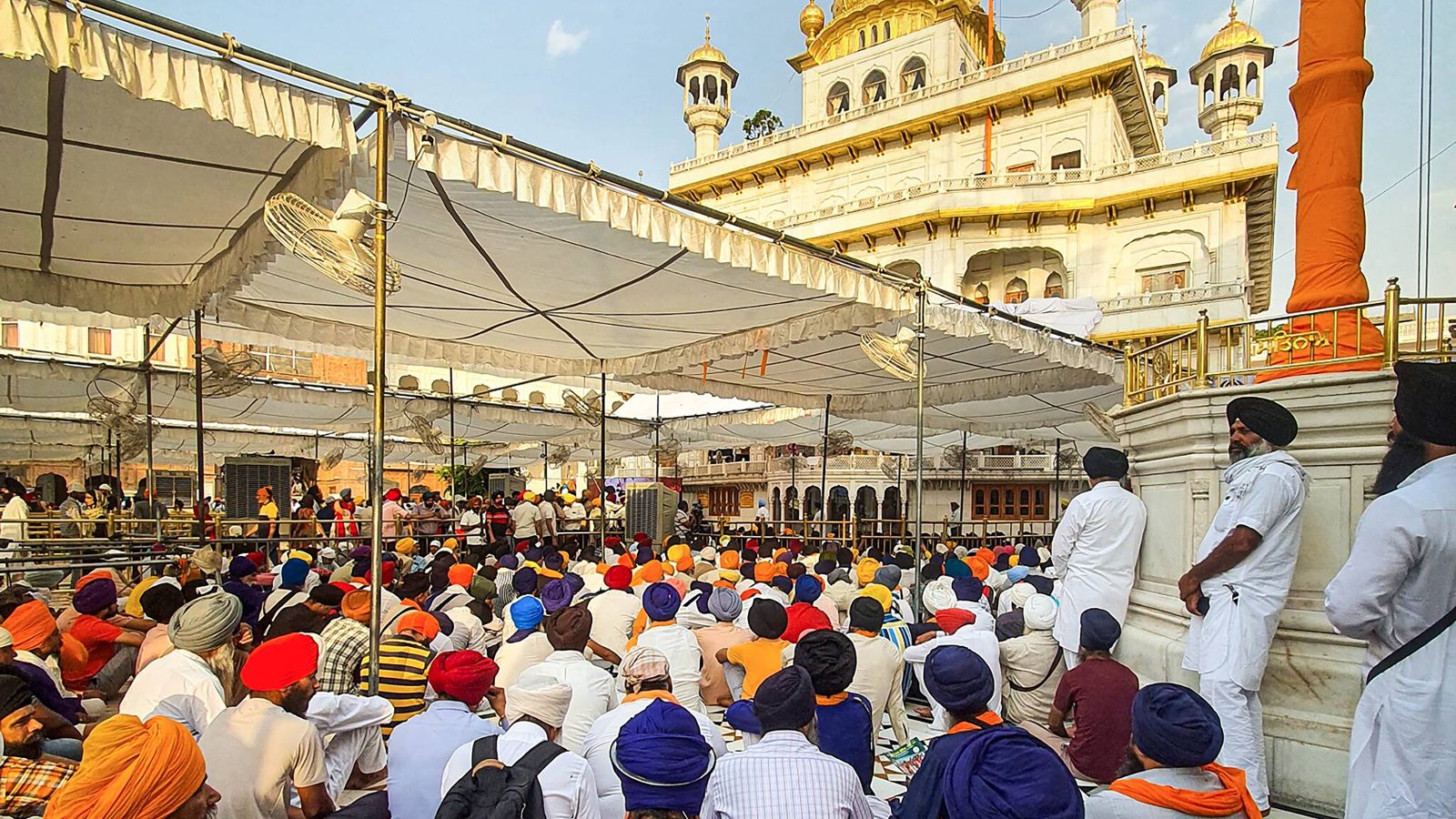What the Fork: Gurdwara Langar – Gateway to God and Divine Food, Writes Kunal Vijayakar

There is no institute, charity, or soup kitchen that I know of, which feeds hundreds of thousands of people free of cost on a daily basis, all 365 days a year. There is not a congregation that I have come across that day after day, procures food, cooks food, serves food to millions of people on a voluntary basis. There is no eco-system in the world, that I am aware of, that does not discriminate between rich, poor, caste, religion and colour when they sit shoulder to shoulder and eat those thousands of meals together. I am speaking of the Langar, the free communal kitchen service, that is part of every single Sikh Gurdwara, anywhere in the world.
They say, wherever there are Sikhs, there is ‘Langar’. And that is so true, even in one of the quietist parts of the world, in Woolgoolga, somewhere along the Mid North Coast of New South Wales in Australia, after many hours of driving, past acres of banana farms, I saw familiar looking architecture. Peeking from the lush green leaves, were arched ‘chattris’ and a glistening white onion shaped dome rising out of the vegetation. I swore it had to be a Gurdwara, and it was.
Nothing was as welcoming as finding a Langar in the middle of nowhere. While the dal and chawal was free, from an adjoining restaurant, we happily ate some chicken masala and pakodas — it being our first Indian meal in weeks. I felt blessed.
While the term ‘Langar’ refers to the food served at a Sikh Gurdwara, the most important part of the ‘Langar’ is the ‘Seva’, and almost everybody who enters the shrine does the service. ‘Seva’ can be done in the form of donating food, cooking the food, serving food, and helping clean and wash up after, and there is no better place in the world to watch ‘seva’ than at the Golden Temple in Amritsar.
I first went there about 20 years ago, one early December morning to shoot my show, ‘The Foodie’. The sun had just started rising, and the early morning rays made the dome of the Sri Harmandir Sahib gleam, shimmer and glaze in fiery gold. It was cold. The Amrit Sarovar covered with mist, catching the first light of the morning. I could hear the resonance of the early morning ‘Gurbani Kirtan’ and the aroma of food cooking at Guru Ka Langar, which is cooked in two massive halls.
At any given time, there are hundreds of ‘Sevaks’ chopping vegetables, kneading dough, and stirring huge utensils the size of drums. Huge fires cooking the food as well as keeping us warm on a wintry Amritsar morning. Chapatis or Rotis were being rolled out by the expert hands of volunteers who do this task in turns, and a mega-roti maker spewing dozens of rotis in a few seconds. Although there are hundreds of people cooking in this prodigious kitchen, there is no crazy rushing shouting or madness, just a sense of procedure, efficiency, devotion and quietness. Above all, the mammoth kitchen is squeaky clean.
On an average, the Golden Temple’s Langar feeds over 100,000 devotees every day; a number that almost doubles on special occasions. More than 10,000 kg of ‘atta’, 2,500 kg of dal, 1,000 kg of rice, 5,000 litres of milk, over 1,000 kg of sugar, and 500 kg of pure ghee is used in a day. Food is cooked and served around the clock.
The menu is simple and wholesome. Rice served with Black Dal and Rajma, (Langar ki Daal), one vegetable (usually Aloo Gobi), rotis and kheer. Though this meal sounds simple, it is the most divine tasting food one could ever eat. This is for several reasons.
First, since it is a devoted voluntary service, only the best quality ingredients are donated and used. The recipes are usually simple, traditional, and time-tested. And then when food is cooked in such large quantities, it takes on a character of its own, one which cannot be produced in a home kitchen. And finally, there is the use of pure ghee.
In a Gurdwara in Mumbai, at a Langar during the Guru Nanak Jayanti, I discovered another dish called ‘Dilkhush’, which is a salad of coarsely chopped onion, turnip, tomato and cucumber mixed with red chili powder and a dressing of tamarind and jaggery water. My oh my! What an accompaniment to meal that is already so tasty.
The Golden Temple’s ‘Kada Prashad’ is a delicacy by itself. Made by cooking whole wheat flour, sugar and water in pure ghee, till thick and brown, the ‘Kada Prasad’ is fed to everyone who comes there by the handful.
Once the cooking is done and the food is ready, it is then dedicated to the Almighty in a short quick ceremony called ‘Ardas’. When the food is ready, and before it is served, it is offered to God. A small portion of each of the dishes cooked is placed in a plate in front of the Sri Guru Granth Sahib and the ‘Ardas’ is performed. It’s like a prayer of thanks. A steel ‘kirpan’ is passed through each item of food, and the ‘Guru-Prashad’ gets blessed. Food cooked in the Langar is never eaten or even tasted before the Ardas is performed, which means all these gallons of dal, kheer and vegetables are cooked without tasting for salt, spices or recipe. Once the ‘Ardas’ is completed, each item of food is put back to its original vessel and is mixed well. This way, the blessings are passed through all the food and to all those who will eat the food at the Langar.
But the most important thing about the Langar and the food cooked there is that everyone sits in ‘Pangat’ or in a row. Most of you don’t even know the person sitting next to you. You may not know his name, religion or caste, whether he is rich or poor, a good man or a sinner. In the eyes of the Almighty, and the Langar, everyone is equal.
Kunal Vijayakar is a food writer based in Mumbai. He tweets @kunalvijayakar and can be followed on Instagram @kunalvijayakar. His YouTube channel is called Khaane Mein Kya Hai. The views expressed in this article are those of the author and do not represent the stand of this publication.
Read all the Latest Lifestyle News here
For all the latest lifestyle News Click Here

